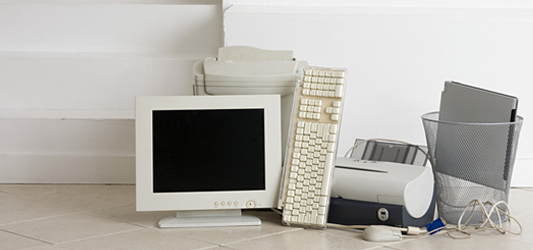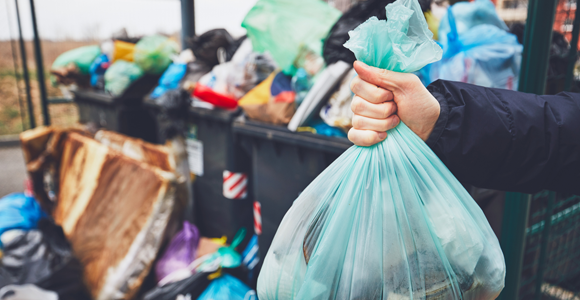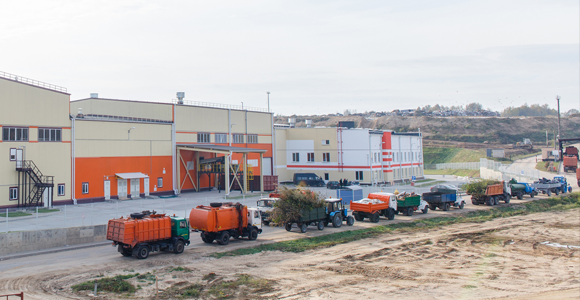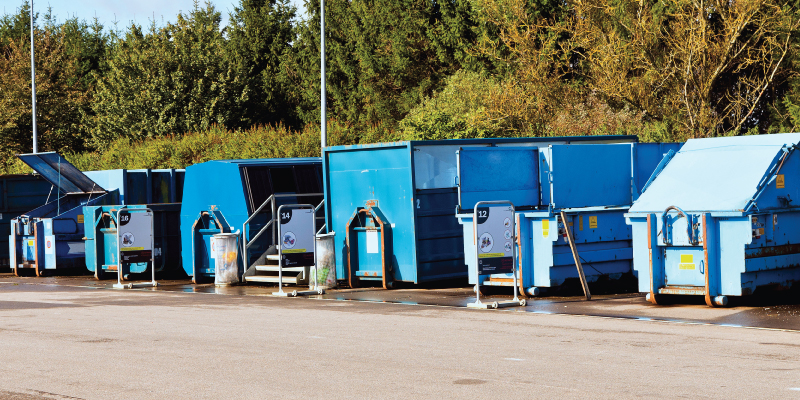
Updated March 15, 2024
Recycling facilities play a key role in managing the waste generated by communities around the world. Recycling and waste reduction are essential components of a sustainable waste management strategy, which is what makes recycling facilities remain an integral part of the process, and utilizing a recycling facility or drop-off location can look a couple different ways.
Of course, tossing recyclable items in your curbside recycling bin is one way to get your unwanted recyclables to the appropriate facility, but you can also hire a junk removal company for larger loads or haul items there yourself using your own vehicle or trailer.
In this article, we will delve into the inner workings of a recycling facility and how they function, and explore the pros and cons of the different ways to drop off at a recycling facility.
Table of Contents:
- How Recycling Facilities Work
- What to Expect When Dropping off at a Recycling Facility
- Benefits and Advantages to Dropping off at a Recycling Facility
- Benefits and Advantages to Junk Removal Services
Find junk removal services near you
How Recycling Facilities Work
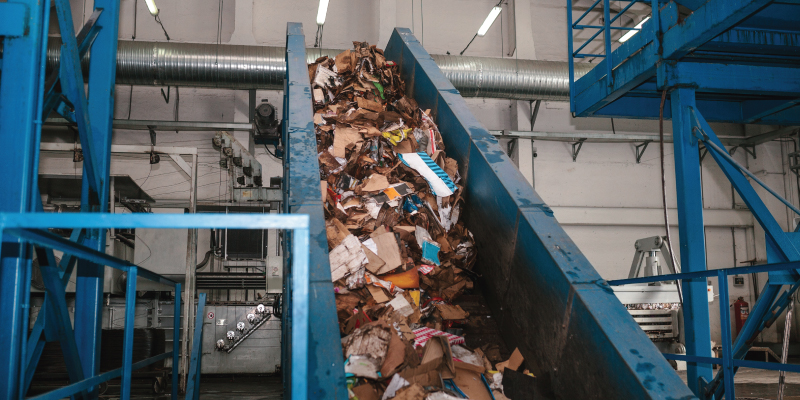
Recycling facility drop-off stations are a one-stop location for all your recycling and safe waste disposal needs and an environmentally preferable alternative to landfilling.
Recycling facility drop-off stations provide convenient and accessible recycling services for hard-to-recycle materials such as electronics (e-waste), textiles, plastic bags, freon appliances, lightbulbs, batteries, tires, and expanded recycling for single-stream and metal.
The basics of a recycling facility involve several key processes that work together to transform collected recyclables into reusable materials. Here is a look at the fundamental aspects of the average recycling facility:
Collection
Recycling begins with individuals separating recyclable materials from general waste at the source, either at home, businesses, or community collection points.
Collected recyclables are transported to recycling facilities through curbside pickup services or drop-off centers.
Sorting
Workers manually sort through materials to separate different types, such as paper, glass, plastic, and metals.
Advanced technologies, including conveyor belts, optical sensors, and magnets, are employed to automate the sorting process efficiently.
Shredding and Pulverizing
Certain materials like paper and cardboard may undergo shredding to break them down into smaller pieces.
Paper products are turned into a pulp-like consistency, facilitating further processing.
Read more: Paper Recycling 101: Everything You Should Know
Washing and Cleaning
Plastics, in particular, undergo washing processes to remove contaminants and ensure the quality of the recycled material.
Specialized equipment is used to wash away impurities, leaving behind clean and ready-to-process materials.
Melting and Reforming
Materials like metals and plastics that can be melted are subjected to this step, transforming them into raw forms for reuse.
Melted materials are molded or cast into new shapes, allowing for the creation of new products.
Reprocessing and Manufacturing
Raw materials obtained from recycling are reprocessed to meet specific requirements for manufacturing.
Recycled materials are integrated into the manufacturing process to create new products, completing the recycling loop.
Quality Control
Throughout the recycling process, quality control measures are implemented to ensure that the recycled materials meet industry standards and specifications.
Materials may undergo testing and inspection to verify their purity and suitability for reuse.
Distribution and Sale
The recycled materials are distributed to manufacturers and industries that use them in the production of new goods.
Recycled materials may be sold in the market, creating a sustainable economic model for the recycling industry.
Education and Outreach
Recycling facilities often engage in educational outreach programs to raise awareness about the importance of recycling and proper waste disposal.
Facilities may promote sustainable practices and encourage individuals and businesses to participate in recycling programs.
Find junk removal services near me
What to Expect When Dropping off at a Recycling Facility
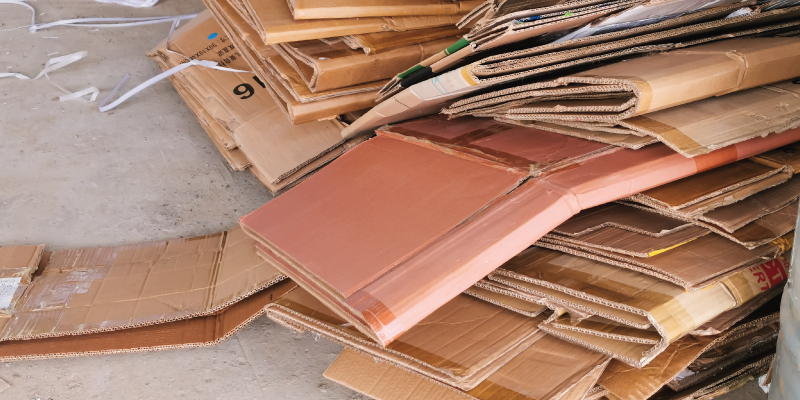
Every recycling facility is different and operates in a way most useful for its users and city, but most recycling facilities utilize drop-off stations and follow a process similar to as follows:
Step 1: Arrive at the Drop-Off Location
Customers arrive at the designated drop-off location with their recyclable materials. These drop-off locations are often strategically placed in communities to provide convenient access for residents.
Your local drop-off location may require a gate fee or drop-off fee that allows for the disposal of accepted recyclable materials and may charge an additional fee for certain items and services, like electronics or tires for example. In many cases, there are no fees for standard recyclables.
Step 2: Identification and Segregation
Upon arrival, customers identify the type of recyclables they are depositing. Drop-off locations usually have designated bins or containers for different materials such as paper, glass, plastic, and metals.
Step 3: Deposit of Recyclables
Customers deposit their recyclable items into the respective bins or containers. It is essential to follow any posted guidelines or instructions regarding the acceptable materials for recycling at that location.
Step 4: Separation of Materials
After the recyclables are deposited, facility staff or automated systems may further segregate the materials to ensure proper sorting. Some drop-off locations may have on-site personnel who monitor the bins and make adjustments as needed.
Step 5: Transportation to Recycling Facility
Periodically, the contents of the drop-off location are collected and transported to the recycling facility. This may be done by the facility's own vehicles or through contracted waste management services.
Step 6: Sorting and Processing
Once at the recycling facility, the collected materials undergo a thorough sorting process. This can involve both manual and automated methods to separate different types of materials, removing contaminants in the process.
Step 7: Cleaning and Preparation
Certain materials, especially plastics, may undergo cleaning processes to remove impurities and prepare them for further processing. This step is crucial to ensure the quality of the recycled material.
Step 8: Shredding and Melting
Depending on the material, items like paper and cardboard may be shredded, while metals and plastics may be melted down. Shredding and melting processes help break down materials into more manageable forms for recycling.
Step 9: Reformation and Reprocessing
The processed materials are reformed into raw forms suitable for manufacturing. This can involve molding melted plastics into new shapes or casting melted metals into ingots.
Step 10: Integration into Manufacturing
The recycled materials are integrated into the manufacturing process to create new products. For example, recycled paper can be used to produce new paper products, and recycled plastics can be used in the production of packaging or other plastic items.
Step 11: Market Distribution
The recycled materials, now transformed into new products, are distributed to manufacturers, industries, or the market for sale and use.
Find junk removal services near you
Benefits and Advantages to Dropping off at a Recycling Facility
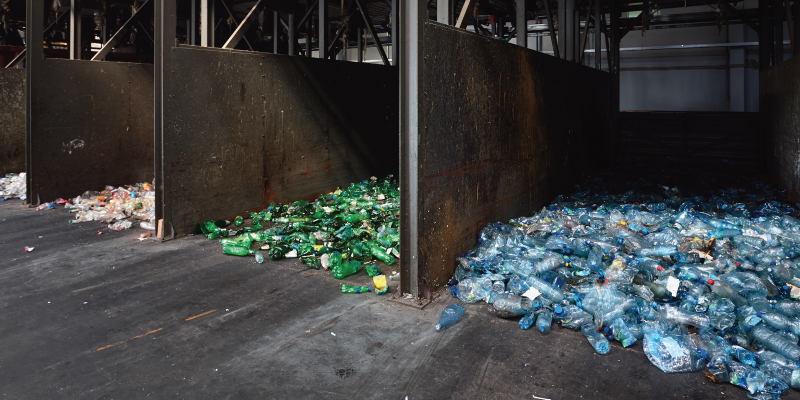
Let's take a closer look at the pros and cons of dropping off recyclables at a recycling facility yourself to get a more thorough understanding of whether or not it's the right fit for you...
Pros of Dropping off at a Facility
- Cost-Effective: Dropping off recyclables at a facility yourself is typically cost-free or involves minimal fees, making it a budget-friendly option.
- Convenient: Recycling facilities are often strategically located for easy access, providing convenience for individuals to drop off materials at their own pace.
- Immediate Disposal: Waste is immediately disposed of at the facility, eliminating the need for storing recyclables until a pickup service is scheduled.
Cons of Dropping off at a Facility
- Time-Consuming: Dropping off recyclables may be time-consuming, especially if the facility is located at a distance from the individual's residence or if there are long wait times at the facility.
- Transportation Hassle: Individuals may need to transport recyclables in their own vehicles, and often travel quite far, which can be inconvenient for those with limited transportation options or large quantities of materials.
- Physical Effort: Handling and sorting recyclables and hauling them to the nearest facility may require physical effort, especially for heavy or bulky items.
Benefits and Advantages to Junk Removal Services
Hiring a junk removal service can be a great alternative to dropping off at a recycling facility yourself, as they prioritize recycling and donating.
Pros of Hiring a Junk Removal Service
- Convenience: Junk removal services offer a convenient solution by picking up recyclables directly from the customer's location, saving time and effort.
- Professional Handling: Trained personnel from the junk removal service handle the entire process, ensuring proper sorting and disposal of recyclables.
- Time-Saving: Customers save time that would otherwise be spent transporting materials to a recycling facility, making it an efficient option.
- Large Volume Handling: Junk removal services are equipped to handle large volumes of recyclables, suitable for individuals with substantial amounts of materials.
Cons of Hiring a Junk Removal Service
- Cost: Paying for a junk removal service involves a cost, which may vary based on factors such as the quantity and type of recyclables. In most cases, you will need to pay a minimum fee of $75-$100 but may be more if you have a large amount of recyclables. Junk removal services are typically priced on the amount of space your load takes up in the truck.
- Less Direct Involvement: Individuals have less direct involvement in the recycling process, potentially reducing the educational aspect of responsible waste management.
- Scheduling Dependency: Pickup services operate on scheduled appointments, requiring individuals to coordinate and plan the pickup, which may not align with immediate disposal needs.
- Potential for Contamination: If recyclables are not properly sorted by the customer, there's a risk of contamination during the pickup process, affecting the quality of recycled materials.
Understanding how recycling facilities work and what to expect when dropping off recyclables helps you make the most informed choice about your disposal practices. Weigh the pros and cons of each drop-off method to be sure you're doing the best thing for you and your project. If hiring a junk removal service is your best option, let Hometown help you find a qualified local junk removal service. Read verified customer reviews, easily request multiple free quotes with the click of a button, and get answers to common junk removal questions—all in one place.
